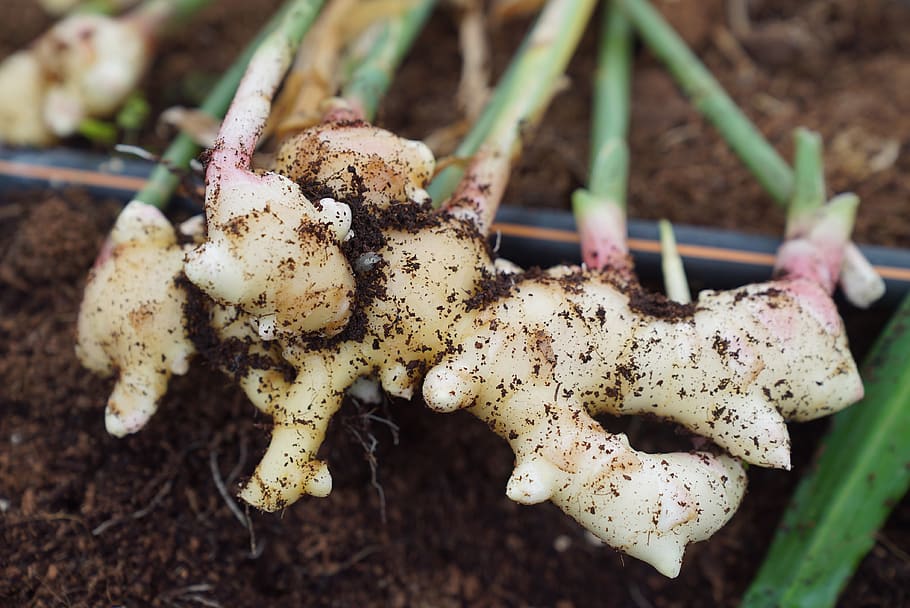
Do you love cooking with ginger?
This is another great article with wonderful tips on growing indoors or container gardening. This time we’re talking about ginger! I so love ginger in a variety of culinary uses. I like to use it as a base with garlic, shallots, and peppers when making pulled pork.
Growing your own ginger is a great way to save money and have fresh ingredients on hand. It’s also easy, so it makes for a fun project that the whole family can enjoy! You don’t need much space or experience to get started. All you need is some soil, water, sunlight, and patience. We’ll show you how in this article!
Ginger has been used as medicine for thousands of years because of its anti-inflammatory properties. It helps reduce nausea associated with chemotherapy and morning sickness during pregnancy. And it tastes amazing in all kinds of dishes from stir fry to tea! If these benefits are important to you then growing your own ginger at home is definitely worth trying out. Plus it will make your house smell wonderful when the plant flowers!
When is the Best Time to Grow Ginger?
The best time to grow ginger is during the spring or summer. Many gardeners don’t have the room to grow ginger indoors, so they choose to grow it outside. This allows their plants to have access to the proper amount of sunlight and plenty of space.
Ginger needs at least six hours of full sun every day, which is why most people who grow this plant pick a spot that gets lots of it. If your home is in an area that doesn’t get six hours of direct sunlight every day, then you’ll need to use grow lights to make up for it.
What Type of Soil Should I Use for Growing Ginger as a Vegetable?
When it comes to growing ginger as a vegetable, the soil type is an important consideration. You’ll want to use a soil type that is well-drained and has a neutral or slightly acidic pH. You can test the pH of your soil with a home testing kit or by sending a soil sample to a laboratory.
Before planting ginger, prepare your garden soil by adding compost. This will ensure that the soil is nutrient-rich and promotes drainage, which is key for growing ginger as a vegetable. Avoid using peat moss or any other type of planting medium that doesn’t provide proper drainage. Although ginger is not a root vegetable like carrots or beets, it does require fertile soil. The compost you add should consist of equal parts by volume decomposed cow manure, topsoil, and peat.
When can I Harvest my Ginger?
Ginger can be harvested at any time, but it is generally easier to harvest when the plants are younger. You can harvest ginger by cutting off the rhizomes (the underground stems that store the ginger) with a sharp knife. This is especially useful when the plant has grown too large for your container or it is time to share ginger with friends.
How Early can I Plant my Ginger Seedlings Outside?
Ginger (Zingiber officinale) is a tropical plant that is usually grown as an annual in temperate climates. Ginger can be planted outside as early as the beginning of spring, but it will likely not produce a harvest if it is planted earlier than late spring.
Ginger can be planted outside once the nighttime temperatures are regularly above 60 degrees Fahrenheit and the soil is warm and free of frost. It is important not to plant ginger at all before early spring because it needs a period of time in cold temperatures (at least eight weeks) before it will sprout. This exposure to cold is called vernalization and it is an important part of making the ginger grow.
Conclusion: Ginger is a delicious and versatile spice that can be used in many recipes. It’s also easy to grow at home, so if you want to have fresh ginger on hand all year long, growing your own is the way to go! In this article, we’ve outlined the steps you need to take to get started with your own ginger garden. Follow these simple instructions, and you’ll be enjoying your homegrown ginger in no time!
